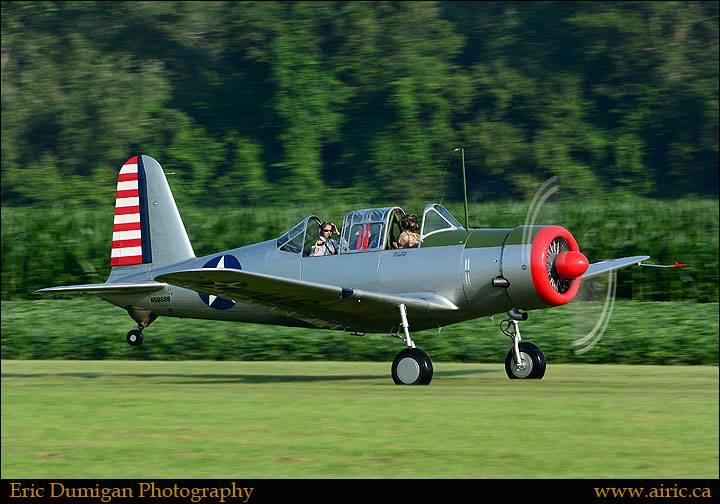
BT-13A
BT-13A Valiant
"Vibrator"

"Vibrator"
National Warplane Museum
The Vultee BT-13A Valiant — often remembered by its nickname “The Vultee Vibrator” — was the primary basic trainer for thousands of U.S. Army Air Forces pilots during World War II. It played a critical role in preparing fledgling aviators to transition from initial flight training to more advanced and demanding aircraft on their path to combat readiness.
Introduced in 1940, the BT-13 series became the backbone of America’s wartime pilot training program. Built with a powerful radial engine and more advanced flight characteristics than the light primary trainers, the BT-13 challenged cadets to master instrument flying, stalls, spins, and formation flying. Over 11,000 BT-13s were produced during the war, making it one of the most numerous and widely flown trainers of the era.
The BT-13A served as a basic trainer, bridging the gap between simple primary trainers like the Stearman PT-17 and the advanced trainers that would prepare pilots for front-line fighters, bombers, and transports. Its relatively forgiving yet challenging flight characteristics made it ideal for building pilot skill and confidence before advancing to more complex aircraft.
Vultee BT-13A Valiant (Military No. 41-21997 / Manufacturer’s No. 5836 / N# N58698)
Built in 1941, this BT-13A continues to serve as a living, flying piece of aviation history. The aircraft is privately owned by Museum member and pilot Rob Gillman, whose family has a personal connection to WWII — his father flew B-24 Liberators in the European Theater of Operations during the war. The aircraft is carefully maintained and flown regularly by Rob and his son Ryan, allowing Museum visitors to witness this iconic trainer in flight during airshows and special events. Its active flying status offers a rare opportunity to experience one of the most important training aircraft of WWII as it was meant to be seen - in the air.
WWII Basic Trainer
On display from Valiant Air Group LLC
Method: On Display
Hangar #1
Other aircrafts in our collection


